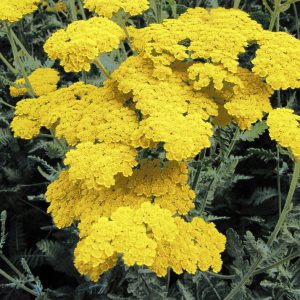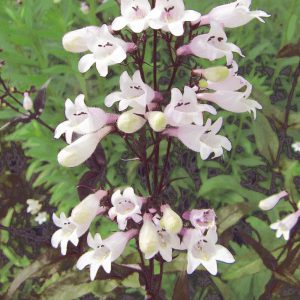- 1-9 pkts $4.50
- 10 pkts FREE
- Express post $12
Fritillaria imperialis
CROWN IMPERIAL FRITILLARY
Fritillaria imperialis is the holy grail of the Fritillaria world, and of gardeners everywhere.
Most lusted after of all the spectacular Fritillarias
Gardeners will go to almost any lengths to possess a stately Crown Imperial.
They are big and gorgeous.
Head of apricot-orange bells crowned with green top-knots
Each stem produces a spectacular circlet of large, nodding apricot-orange bells.
Topped with a perky top-knot of little green leaves, like a crown – hence the name Crown Imperial.
Crowns atop strong stems to 1m tall
They are a breathtaking sight for about 3 weeks in mid to late spring – and you take photos – brag with all your heart, then wait again for next year’s treat.
With musky scent
The flowers have an unusual, but pleasant scent.
Spectacular show with no mess
Slender, un-messy foliage is also a plus. Because it dies away after the spring blooming with barely a whimper, and leaving no mess.
Fritillaria imperialis is sometimes thought of as a bulb, but it is actually a bulbous perennial.
Under trees & shrubs
Plant Fritillaria imperialis in Morning Sun with Part Shade or Dappled Sun in the afternoon (though it will also thrive in full sun in cooler climates).
They need approx. 6 hours of sun per day, but prefer not to have the very hot late afternoon sun.
So it suits perfectly when planted in the dappled afternoon light near trees & shrubs, or a spot where shade comes over in the afternoon.
Love well drained soil
Plant in a humus rich soil with plenty of old leaf litter added, and plenty of sand and gravel mixed in too for drainage.
Soil can be alkaline to neural pH, but definitely not clay.
The Crown Imperial does demand perfect drainage – so plant them surrounded by a bed of coarse sand or gravel, to help prevent water from accumulating around the fleshy, bulb-like roots.
They love a feed of lime and blood & bone in their growing season, before they die down.
Low maintenance & not too thirsty
Fritillaria imperialis is a low-care plant, as long as its likes are met.
It is not a thirsty plant – preferring to have water in the spring growing and flowering season, then drying out somewhat over summer and autumn.
So they usually only need watering every couple of weeks, depending on conditions.
They prefer to dry out between drinks.|
Fritillaria imperialis is also frost hardy.
No need to dig & divide – leave them to make a colony
Then you can leave the bulbous perennials for years. With no need to dig and replant.
When they are in a happy place, spectacular Fritillaria imperials will self-seed for you.
They are even more spectacular (if that is possible) in informal groups.
Rabbits & deer snub them
Just as well that rabbits and deer don’t like the taste of Fritillaria imperialis, otherwise a notmally rational gardener might turn murderous.
Bees & pollinators love the nectar
The bumper big flower heads of Fritillaria imperialis are like a nectar buffet for our pollinating friends.
1m High in spectacular crowns of flowers x 20cm Wide of slender, fine, reed-like foliage.
SEED SOWING ADVICE:
Sow seeds of Fritillaria imperialis in a punnet / small pots during autumn/winter/spring
OR
Scatter in garden winter-early spring.
Because these seeds need a period of cold chilling to break their natural dormancy and germinate.
Indoors for early & quick plants: Sow the seeds in a punnet / small individual pots on the surface of good quality seed raising mix.
Then gently pat the seeds to the surface of the mix to ensure good contact.
Now barely cover seeds with grit or sand.
Do not bury them, as they need light to germinate.
And thoroughly moisten the punnet by standing it in a shallow water bath and allowing the moisture to percolate up to the surface of the mix from below.
Then cling wrap the moist, sown punnet and place in the fridge (not freezer) for 6-8 weeks.
After the period of chilling, remove and unwrap the punnet and place in an unheated, cool, light place.
Temperatures of 10 to 20°C are ideal for optimum germination.
Most seedlings should emerge in about 30 days.
But do not discard too quickly. Because it is a natural safety device for this plant to stagger the seed germination. So some seeds may come later than the others.
Seed Count: 5 seeds per pack (Seeds of this very special plant are scarce).
Click here for Nursery Open Days & Open Gardens Information
https://www.gardivalia.com.au/open-gardens
Click here to go back to Seeds Shop
https://www.seedscape.net.au/shop/
Related products
-
Add to WishlistAlready In WishlistAdd to Wishlist
-
Add to WishlistAlready In WishlistAdd to Wishlist
-
Add to WishlistAlready In WishlistAdd to Wishlist
-
Add to WishlistAlready In WishlistAdd to Wishlist





